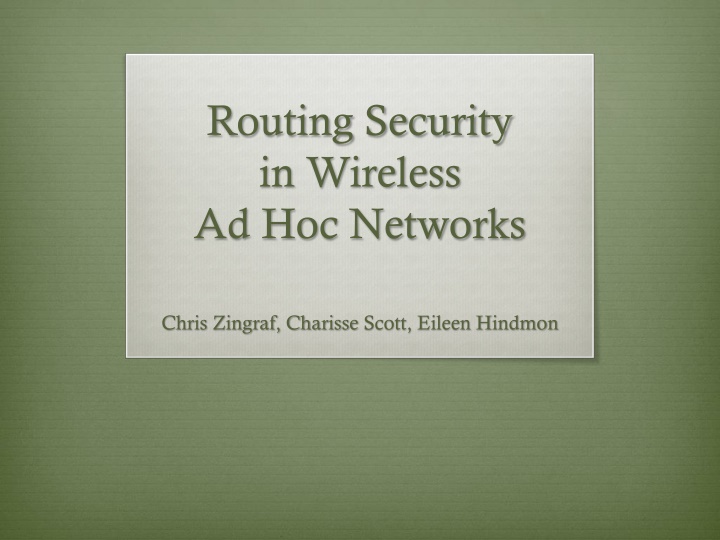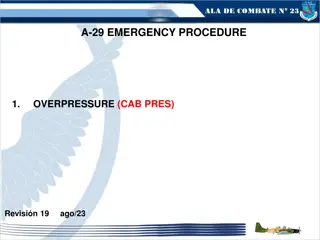
Wireless Ad Hoc Networks Security Overview
Explore the security challenges in wireless ad hoc networks, focusing on routing security, mobile ad hoc network communication, MANET security, and proposed solutions. Learn about existing problems and unsolved issues in path-based adaptive schemes, with a goal to improve network performance by transitioning to an optimal path-based method.
Download Presentation

Please find below an Image/Link to download the presentation.
The content on the website is provided AS IS for your information and personal use only. It may not be sold, licensed, or shared on other websites without obtaining consent from the author. If you encounter any issues during the download, it is possible that the publisher has removed the file from their server.
You are allowed to download the files provided on this website for personal or commercial use, subject to the condition that they are used lawfully. All files are the property of their respective owners.
The content on the website is provided AS IS for your information and personal use only. It may not be sold, licensed, or shared on other websites without obtaining consent from the author.
E N D
Presentation Transcript
Routing Security in Wireless Ad Hoc Networks Chris Zingraf, Charisse Scott, Eileen Hindmon
Mobile ad hoc Network Collection of wireless mobile nodes Communicate without network infrastructure or centralized administration Offers unrestricted mobility and connectivity Each node acts as host and router Out-of-range nodes are routed through intermediate nodes
Wireless MANET Security with Network open medium dynamic topology distributed cooperation constrained capability Routing Security black hole attack
Literature Survey Chundong She et al Path-based algorithm Hizbullah Khattack et al Second shortest path Medadian et al Check each node Deng et al Next hop Hongmei Deng Disable intermediate node reply
Problem Existing problems in Path-Based Adaptive (PBA) scheme: Problem: high collision rate -> inability to overhear the forwarding of packets from the next hop nodes -> high false positive rate with static detection Solution: dynamic threshold calculation, based on the current probabilities of a collision occurring and a packet being forwarded
Problem Unsolved problem: Dynamic threshold calculation provides a lower rate of false positives, but also a less competitive detection rate. Figure - She, et al.
Problem Our goal: To determine whether rolling over to Optimal Path & Hash based (OPH) scheme at high network load would be an improvement over the Path-based Adaptive method.
Approach to Solve the Problem Must answer two questions: Determine weak point in She et al.'s method at what network load (CBR rate) does it fail? This is the point where we should switch to OPH scheme. How to measure the change in performance that our proposed method achieves?
Results Largest disparity begins at 1.5 KB/s If OPH scheme were implemented at CBR stream rates >= 1.5 KB/s, it may narrow this disparity.
Results Which metric to use to compare results? In She et al. s paper, overall performance of the PBA scheme is measured using detection rate OPH involves no active detection of black holes We decide to use overall packet delivery rate as our comparison metric
Conclusion We looked at Mobile Ad-Hoc Networks and the security risks involved Discussed Path-based Adaptive method Calculation on current statistics to optimize performance
Conclusion Our proposal: Switch to Optimal Path and hash Based Scheme Questions: Weak point in PBA How will we measure the difference?
Future Work Run simulation on ns2 Record results Compare to Sun s findings






















